Case Studies.
Add Case Study
Our Case Study database tracks 22,657 case studies in the global enterprise technology ecosystem.
Filters allow you to explore case studies quickly and efficiently.
Download Excel
Filters
-
(6,653)
- (2,601)
- (2,127)
- (945)
- View all
-
(5,642)
- (2,469)
- (1,692)
- (826)
- View all
-
(5,571)
- (2,178)
- (1,766)
- (643)
- View all
-
(5,247)
- (2,179)
- (1,715)
- (1,321)
- View all
-
(2,881)
- (1,448)
- (574)
- (376)
- View all
- View all 15 Technologies
- (1,985)
- (1,985)
- (1,915)
- (1,679)
- (1,629)
- View all 42 Industries
- (8,728)
- (4,742)
- (3,618)
- (3,233)
- (2,947)
- View all 13 Functional Areas
- (3,304)
- (2,787)
- (2,603)
- (2,006)
- (1,630)
- View all 129 Use Cases
- (13,581)
- (5,296)
- (4,272)
- (3,520)
- (2,856)
- View all 9 Services
- (504)
- (432)
- (416)
- (382)
- (301)
- View all 1083 Suppliers
Selected Filters

|
Enhancing Supply Chain Efficiency: A Case Study on Outdoor Voices and Flexport
Outdoor Voices, a rapidly growing outdoor apparel company, faced significant pressure on its logistics team due to its direct-to-consumer sales model through its website and physical stores. The company operates a 100% vertical supply chain, where it acts as the importer and retailer, without the support of channel partners to share delivery responsibilities. This model made their supply chain a critical part of their success. However, the company struggled with maintaining stock, meeting go-to-market dates, and exceeding customer expectations. Additionally, the company needed more granular, timely, and digestible supply chain data to make strategic planning decisions and drive down supply chain costs.
|
|
|

|
Qardio's Transformation: Leveraging IoT for Enhanced Supply Chain Management
Qardio, a San Francisco-based cardiovascular monitoring company, was facing significant challenges in managing its supply chain. As a small brand, Qardio struggled to find a freight forwarder who could provide the level of customer service they required. The lack of visibility into the movement of their shipments was a major concern. Their logistics team was spending a significant amount of time tracking shipments, which was not only time-consuming but also costly. This was hindering their operational efficiency and preventing them from focusing on improving their operations. The company was also experiencing frequent FDA-related delays, which were negatively impacting their business growth.
|
|
|

|
Flexport's IoT Solution Streamlines Rensair's Supply Chain Amid Pandemic
As the Covid-19 pandemic spread globally, the demand for Rensair’s hospital-grade air purification system surged. However, the company faced significant challenges in meeting this demand due to the severe capacity squeeze experienced by shippers and carriers. Rensair needed to maintain visibility on their supply chain and adopt a proactive problem-solving approach to continue delivering to customers. The situation was further complicated by the closure of borders, which severely restricted travel and transportation, impacting logistics costs and lead times. The company was being approached by various sectors, including schools and construction sites, that remained operational during the pandemic and needed to ensure safety. Rensair was also dealing with international shipping during the worst times, relying on flying in all their goods from Asia, which was both expensive and unsustainable.
|
|
|

|
Santa Cruz Bicycles Enhances Supply Chain Efficiency with Flexport
Santa Cruz Bicycles, a high-end mountain bike manufacturer based in California, faced significant challenges in managing its procurement timeline to align with its manufacturing schedule. The company sources parts from over 100 suppliers worldwide, and struggled to receive timely updates on the status of parts in transit. This lack of visibility made it difficult to keep their team aligned and meet launch schedules. Angela Jensen and her fellow buyers, part of the procurement team at Santa Cruz Bicycles, were responsible for purchasing parts from 150 global suppliers to support the assembly of their bikes in their California facility. In addition to procurement, much of their time was also spent ensuring the timely arrival of the many moving components of Santa Cruz’s supply chain.
|
|
|

|
Digital Transformation in Freight Operations: A Case Study on Sika Deutschland
Sika Deutschland, a leading supplier of industrial adhesives, faced significant challenges in managing freight operations at their Rosendahl site. The two primary concerns were freight rates and punctuality, both of which were crucial to meet customer requirements. As a heavyweight in the construction chemicals sector, Sika Deutschland had to ship low-price raw materials like sand, cement, and gypsum around the world, which often posed logistical challenges. Freight accounted for a high share of their total costs due to the heavy yet low-value nature of their products, making their operations extremely price-sensitive. The company needed to transport goods as cheaply as possible without compromising on delivery schedules. Any failure to meet delivery dates resulted in additional costs and operational turmoil. Sika Deutschland was also in need of a freight-forwarding partner for the US market that understood the regional requirements and could provide real-time updates on shipment status.
|
|
|

|
How Solé Bicycles Achieved 24% Year-Over-Year Growth with Flexport Capital
Solé Bicycles, a Venice Beach-based bike retailer, was facing complexities in its finances and supply chain due to the growing demand for its products. The traditional supply chain payment flows were causing working capital constraints, forcing the company to make tough trade-offs and limiting its ability to invest in growth. The company's President, Jimmy Standley, was managing Solé’s global network of manufacturers and was finding it difficult to build relationships with multiple forwarders. The process was time-consuming, lacked transparency, and was primarily managed over spreadsheets and emails.
|
|
|
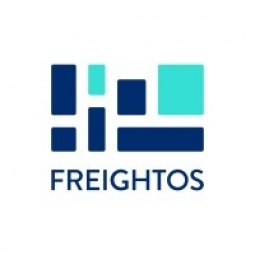
|
Code&Quill’s Digital Transformation: Simplifying Freight Logistics with Freightos.com
Code&Quill, a Texas-based company that produces creative notebooks, faced a significant challenge in managing their freight logistics. After a successful Kickstarter campaign, the company had to ship goods to nearly 1,200 backers. However, the freight industry's outdated practices were not conducive to the needs of a small, fast-growing business like Code&Quill. The company's logistics manager, Dan Otto, found himself waiting up to 48 hours for a single freight quote, and the lack of transparency and efficiency in the process was hindering the company's growth. The team needed a solution that would streamline their shipping process, cut costs, and save time, allowing them to focus on their core business.
|
|
|
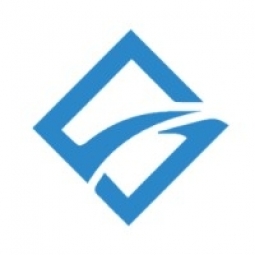
|
Streamlining HAZMAT Shipping and NetSuite Integration for Agricultural Advocacy Organization
One of America's largest non-profit agricultural advocacy organizations was struggling with outdated, manual shipping processes. They were shipping nearly 3,000 annual shipments, predominantly within their state, with almost 80% of these shipments being HAZMAT (farm equipment, agricultural products, batteries, etc.). As they prepared to expand their operations into more states, they urgently needed a shipping software that could support HAZMAT, provide API connections to their ecommerce platform SuiteCommerce, and integrate into their ERP solution NetSuite. They also needed automation to drastically cut the cost of manual processes and make arranging shipments more efficient. However, they found that not all shipping software or TMS solutions could support HAZMAT shipping, leading to wasted time in contract negotiations and training for a trial that ultimately proved unsuccessful.
|
|
|

|
Advancing Renewable Energy through Spatial Analysis and Visualization: A Case Study of NREL
The National Renewable Energy Laboratory (NREL) is the only federal laboratory in the United States that focuses solely on renewable energy, commercialization, development, and research. The challenge NREL faces is how to realize high penetrations of renewable energy while achieving broad goals of reliability, resilience, and affordability. The complexity of the energy grid, with its numerous generators and variable load, requires sophisticated tools and visualizations to understand and manage. A fundamental challenge with renewable energy is its variability and continuity in both space and time, which poses challenges to traditional models. The question is how to take a phenomenon that’s inherently continuous and variable, and fit it into a discrete model space, whether it’s nodal or regional. The biggest question is how to ensure that the resource is properly characterized and preserved.
|
|
|

|
Developing an Emergency Response Tool: A Case Study of NYC's Use of CARTO
In the aftermath of Hurricane Sandy, New York City (NYC) was faced with the challenge of scaling its ability to perform analytics immediately after a disaster and in preparation for future disasters. The city had a significant need to enhance its geospatial analytics capabilities, particularly in terms of map-making. The primary challenge was finding a tool that was user-friendly enough to be used by any analyst, regardless of their level of expertise in geospatial analytics. The goal was to quickly visualize data and use it to inform response efforts. The city was also looking to move away from segmenting analysis by a specific type of tool, which limited the ability of analysts to fully utilize and visualize the data.
|
|
|

|
Unlocking Location Intelligence for Retail Marketing: A Case Study on Posterscope
Posterscope, a location-based marketing agency of Dentsu Aegis Group, was faced with the challenge of innovating the way brands are built by leveraging location intelligence. The agency aimed to connect brands with Out-of-home (OOH) audiences at the right moment, making communication more personal, contextual, and relevant. The challenge was to understand the location of these moments and use this information to develop efficient communication solutions. The retail industry was evolving beyond transactions, with activation, engagement, and transactions becoming closer than ever at any touch point. Posterscope needed to adapt to this change and make retail more experiential using location and data. Despite the rapid growth of ecommerce, physical retail was still a significant contributor to the global industry. The challenge was to apply the concepts that made ecommerce grow so fast, such as contextuality and data analysis, to physical retail.
|
|
|

|
Visualizing the Transformation of Commerce & Communities through On-demand Services
The challenge faced by Postmates, a leader in on-demand delivery in the US, was to efficiently connect consumers with merchants and deliver goods from any merchant to the customer's door in minutes. The company had to deal with the complexities of location data, as location carries weight and meaning. The company had to understand the preferences of customers which varied throughout the year, the week, and within a city itself. They also had to deal with the challenge of delivering a wide variety of items, from furniture to late-night medicine runs and diapers, across 300 cities in the US and Mexico.
|
|
|

|
Optimizing Public Transport through IoT: A Case Study of SAGULPA
The Sociedad Municipal de Aparcamientos de Las Palmas de Gran Canaria (SAGULPA), a public transport company, was facing a challenge of managing and optimizing their mobility resources. They had access to multiple location data sources but lacked a unified platform to organize and analyze this information. The company wanted to better understand the mobility patterns in the city, including the distribution of journeys, the profile of the travelers, and the usage of their services. The goal was to use this information to improve their services, reduce traffic congestion, and promote sustainable transport solutions.
|
|
|

|
Improving Healthcare Site Planning with Geolocation: A Sanitas Case Study
Sanitas, a healthcare provider, was grappling with the challenge of understanding the impact of location on the performance of their clinics and hospitals. The healthcare industry is one where location plays a significant role, and Sanitas wanted to gain insights into the specific characteristics of their clinic locations. They wanted to understand how these characteristics, including the age and income of the local population, affected the performance and income of their clinics. Additionally, they wanted to profile their clinics based on the information about their customers, competitors, and other points of interest in the area.
|
|
|

|
Leveraging Spatial Data for 5G Deployment: A T-Mobile Case Study
T-Mobile, the second-largest wireless carrier in the United States, faced a significant challenge when it launched its 5G home internet service in early 2021. The service was made available to 30 million homes across the US, following a pilot period that began in 2019. The challenge lay in the fact that wireless internet for a fixed address requires a significantly different qualification process than a traditional internet service provider (ISP). Making informed decisions about candidacy required a large amount of spatial data. With 185 million unique addresses in the US, each with untold variables associated with them, T-Mobile needed to determine who was qualified for service. This included determining at an aggregate level which zip codes, MSAs, or states had the greatest potential.
|
|
|

|
Grassdoor Boosts Efficiency and Cuts Costs with NextBillion.ai’s Distance Matrix API
Grassdoor's primary challenge was to calculate accurate ETAs and optimize routes for last-mile and on-demand deliveries. The company needed a Distance Matrix API that could handle large API call volumes at scale, run at high throughput and low latency, and be cost-effective. The existing Distance Matrix APIs in the market had limitations, such as a matrix size limited to 25*25 elements, which was insufficient for optimizing a large number of deliveries for Grassdoor's large-scale operations. The cost of these existing APIs was also a concern as they proved expensive and the problem worsened as Grassdoor scaled up. The company was also looking for ways to improve operational efficiency in terms of increased throughput and reduced latency as they scaled.
|
|
|
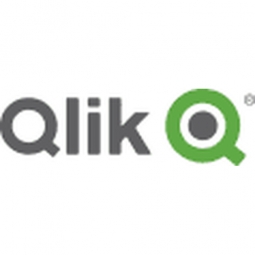
|
King.com Enhances Gaming Experience and Business Insights with IoT
King.com, a leading global online gaming company, was faced with the challenge of managing and making sense of the massive volumes of gaming data generated by their platform. The company needed a way to make this data accessible to the business for informed decision making. They also aimed to deliver rapid business insights and empower their business users with self-service capabilities. The challenge was not only to handle the data but also to derive meaningful insights that could inform various aspects of the business, from executive decisions to marketing strategies and product development.
|
|
|

|
Biagi Bros' Successful Transition to Motive's Fleet Management Solution
Biagi Bros., a leading full-service trucking, warehousing, and 3PL company, was facing significant challenges with their existing fleet management solution. The company was dissatisfied with the evolution of the product and was experiencing issues with integrations, which was slowing down operations. They recognized the need to switch to a new provider but were under a tight timeline as they didn’t want to lose money by having drivers off the road during the onboarding process. The two main challenges they faced were the need for a high-performing integration with their transportation management systems (TMS) provider and a short window of less than three months to find the right solution and get it deployed.
|
|
|

|
Cargo Network Solutions Enhances Compliance and Profitability with Motive
Cargo Network Solutions, a truckload transportation service provider, was facing significant challenges with their electronic logging devices (ELDs). The ELDs were returning inaccurate results, leading to discrepancies that the drivers noticed immediately. The situation worsened when a malfunction led to the company being wrongly charged with an hours-of-service violation. This indicated that the ELD failures had become too expensive to ignore. Furthermore, the company was experiencing connectivity issues with their ELD and GPS devices, which was affecting their customer service. The inaccurate feedback from the fleet's technologies was interfering with driver performance and location accuracy. Fleet managers were having difficulty tracking vehicles over GPS, and drivers were reporting faulty ELDs.
|
|
|

|
Lucky Clover App: Enhancing Engagement at West Virginia University
West Virginia University (WVU) Extension Service was seeking a way to enhance engagement and foster passion among its community. The university wanted to connect people, places, and educational programs in a way that would empower future leaders and improve local communities. The challenge was to find a solution that would facilitate the goals and events of the WVU Extension Service in an interactive and engaging manner. The solution needed to be versatile enough to be used in various events, including the National Extension Technology Conference #NETC2019, which hosts over 100 higher education Extension technology thought leaders and decision makers from American land grant universities.
|
|
|

|
Innovative IoT Solution for Outdoor Scavenger Hunt Game in Grampians, Australia
Grampians Treasure Hunts, a tourism company in Australia, was faced with the challenge of creating an outdoor scavenger hunt quiz game for the Halls Gap Lakeside campsite. The game was intended to add value to the customers of the campsite by providing entertainment to children, adults, and families. The game needed to be engaging, interactive, and accessible to a wide range of users. The challenge was to design a game that could be played outdoors in a vast area of over 10,000 hectares of national park, rich in Aboriginal heritage and known for its award-winning wines and local produce.
|
|
|
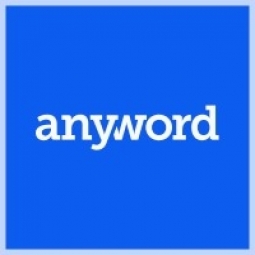
|
Boosting Subscription Acquisition and Retention for News Publishers with IoT
In early March, news organizations across the U.S. initiated an Accelerator Program with the Facebook Journalism Project. The primary objective was to collaboratively enhance their digital subscription businesses, with a particular emphasis on subscriber engagement and retention. This initiative was a follow-up to the Accelerator’s pilot program in 2018, which focused on acquiring digital subscribers. The challenge was to improve subscription retention and engage the newsroom to help keep subscribers engaged. The participating publishers, including the Omaha World-Herald, Miami Herald, Philadelphia Media Network, Atlanta Journal-Constitution, Denver Post, Minneapolis Star-Tribune, Dallas Morning News, Seattle Times, Boston Globe, Chicago Tribune, the Tennessean, the San Francisco Chronicle, Newsday and Advance Local for Syracuse.com, among others, were tasked with building on these learnings over the next nine months.
|
|
|
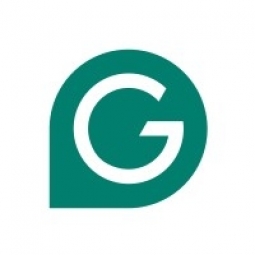
|
Boosting Productivity: How Frost & Sullivan Cut Editing Time by 66% with Grammarly Business
Frost & Sullivan, a global market research and business consulting firm, faced a significant challenge in managing the editing process for their research reports. The team, led by Tonya Fowler, was responsible for crafting detailed reports on some of the world's most innovative companies. This task required a substantial amount of writing, editing, and reviewing. Despite hiring top-notch writers, the editing process remained a critical aspect to ensure the highest quality of material. Tonya had implemented a peer review process, but it was time-consuming and lacked objectivity. The challenge was to find a solution that could streamline the editing process, reduce the time spent on it, and maintain the quality of the reports.
|
|
|

|
Enhancing Customer Experience through Grammarly Business: A Case Study on an Enterprise Software Company
The enterprise software company, with a customer base of over 1000, was facing a challenge in creating impactful and efficient customer support. The company's success was partly measured based on a net promoter score (NPS), which indicates the likelihood of customers recommending their services to others. To improve this metric, the company aimed to develop the soft skills of its team, particularly in the quality of communication to customers in support tickets. Being a global organization, the company needed a solution that could cater to its diverse team and help increase the speed of issue resolution, thereby improving the customer experience. They also wanted a solution that could track and analyze progress.
|
|
|

|
Enhancing Communication for Better Business Outcomes: A Case Study on a National Mortgage Lender
A national mortgage lender with offices across the United States was grappling with internal communication challenges that were negatively impacting team morale, engagement, and productivity. These issues were also affecting customer-facing communication, leading to missed performance goals and lost customers. Despite a favorable market environment with record-low mortgage rates and a booming real estate market, the lender was losing customers due to poor communication. The lender recognized the need to improve communication but faced two distinct challenges. Firstly, they needed to create new communication frameworks and higher quality standards and quickly onboard and coach team members for success. Secondly, they needed to ensure that the changes unified their salespeople and created a more cohesive, effective community of teams without squashing the competitive nature of selling.
|
|
|

|
Inspiring Trust and Maximizing Clarity: Trulia’s Adoption of Grammarly for Content Creation
Trulia, a real estate platform owned by Zillow Group, faced a significant challenge when it began developing its own content in-house about two years ago. The content, which showcases unique homes and neighborhoods across the country, is designed to educate users about the home buying and renting process. Each week, Trulia’s content team produces several blog posts, videos, and sharable social content, often filled with data and analysis. The team also creates a series of homebuying and renting guides that cover a wide range of topics. However, ensuring that all this content is polished, clear, and error-free was a daunting task. Additionally, as the company continued to grow, it was creating more content for its blog, social channels, and products, which further compounded the challenge of maintaining quality while scaling.
|
|
|

|
Achieving Consistent Writing Across Teams: A Case Study on Zapier's Use of Grammarly Business
Zapier, a company that helps customers connect thousands of apps through customized, automated processes, faced a challenge in maintaining consistency in their written communication. As the company grew, the number of documents and style guides used across teams increased, leading to confusion about which information was accurate and updated. The company had specific branded terms and partner names that needed to be used consistently and correctly, requiring a robust writing and editing process. However, team members found it challenging to maintain a single source of truth. During the editing process, team members often had to take time to fix errors, especially with partner names, as mistakes could diminish trust, deteriorate relationships, and create additional editing work if not addressed before publishing.
|
|
|

|
AI-Driven Content Generation: A Case Study on Adore Me's Strategic Shift
Adore Me, a fast-growing startup, was facing challenges with content generation. The company was looking for a solution to handle the 'boring, structured stuff' that was taking up a significant amount of their writers' time. They wanted their writers to focus on more creative endeavors and work on the next big project or campaign. The company was also keen on staying ahead of the curve, exploring tools and technologies that could become part of every retailer's toolkit in the future. The challenge was to find a tool that could cater to their specific needs, deliver on its promises, and help make their processes better and more efficient.
|
|
|

|
Ellevest's Community-Driven Content Strategy: Empowering Women through AI
Ellevest, a financial services company, was facing a significant challenge in maintaining its unique brand voice and inclusive style guide across all its content. The company's content strategy was built by women for women, aiming to address the gender gap in the financial services industry. However, the company was struggling with inefficiencies and bottlenecks in the content creation process. Much of the company's brand voice and style guide knowledge was held by a few individuals who had been with the company for years. This situation created a bottleneck, as only these individuals could effectively edit content to ensure it aligned with the company's voice and style guide. The challenge was to find a way to train more people on the style guide more quickly, release these bottlenecks, and empower more team members to create content that accurately represented the brand.
|
|
|

|
Scaling Support Output by 400%: A Case Study on iManage's Use of Writer
iManage, a leading provider of work product management solutions, faced a significant challenge in scaling their knowledge management resources. The company had a wealth of knowledge to harness, not just from the support team but from the entire organization. However, the process of reviewing and editing content before publishing led to a backlog of articles, hindering their ability to scale and discouraging potential authors. The company needed a solution that would enable them to quickly and efficiently publish quality content, without the need for extensive review and editing. Additionally, they needed a way to ramp up new writers on iManage’s style guides and content guidelines, and to enable a team-publishing model that would allow non-writers to produce great content.
|
|




